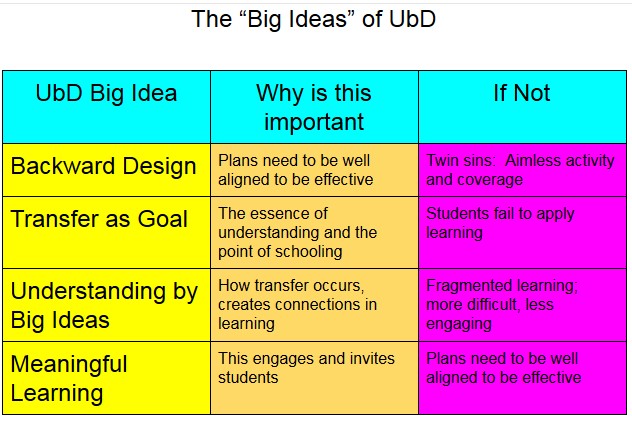Overview of the UbD Framework
Wiggins and McTighe (2011) based the UbD framework on seven key tenets (p. 1):
- Learning is enhanced when teachers think purposefully about curricular planning.
- The UbD framework helps focus curriculum and teaching on the development and deepening of student understanding and transfer of learning.
- Understanding is revealed when students autonomously make sense of and transfer their learning through authentic performance; explain, interpret, apply, shift perspective, empathize, and self-assess.
- Effective curriculum is planned backward from long-term, desired results through a three-stage design process (Desired Results, Evidence, and Learning Plan).
- Teachers are coaches of understanding, not mere purveyors of content knowledge, skill, or activity.
- Regularly reviewing units and curriculum against design standards enhances curricular quality and effectiveness, and provides engaging and professional discussions.
- The UbD framework reflects a continual improvement approach to student achievement and teacher craft.
|
So from these seven key tenets what exactly are the big ideas of UbD?
Before we move on to Objective 2, think about a recent unit you have presented to your students. Was it planned with the end in mind? Can your students transfer their learning to other subjects, ideas, curriculum or real life scenarios? Was this unit planned collaboratively with your peers? Are their any activities in this unit that might be referred to as one of the twin sins? Was the aim of this unit for students to learn?
|
|

